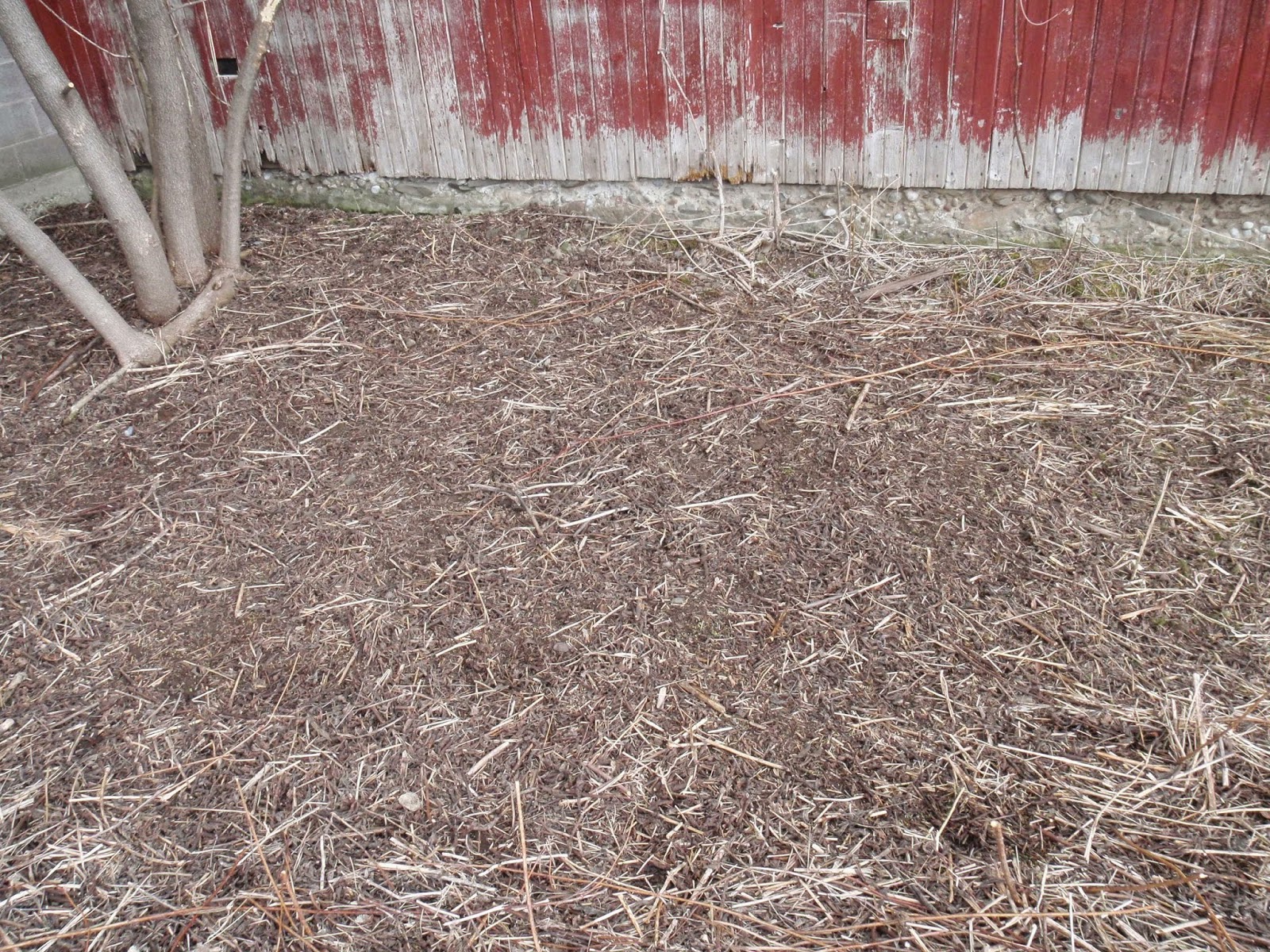I posted a couple of weeks ago about working on renovating the pasture, and then I spent several days planting grass seed.
The grass/pasture seed that I'm planting this year is a Northeastern camelid mix from Nature's Finest Seeds. It is a nice mix of orchard grass, meadow brome, Kentucky bluegrass, and timothy. I really wish there was some clover or alfalfa mixed in for nitrogen fixation, but I couldn't find a blend that I liked that contained one of them. I figure clover will end up growing in the pasture eventually. I also special-ordered some chicory seeds to mix in. Chicory contains tannins, which have been shown to reduce parasite loads in sheep and goats. I figured the llamas wouldn't mind a little variety, and I definitely won't complain if it helps them keep parasites at bay without chemicals!
 |
| My grass-planting tools. I bought a hand spreader (green thing on the left), but it was worthless so I just used my hands. |
There were a few big spots in the pasture where the grass had literally been eaten down to nothing...it was completely dirt. Those areas got raked, seed scattered, raked again, and then I spread some waste hay on top. Technically, that is the "proper" way to plant grass seed.
 |
| One of the bad areas raked and seeded. |
 |
| Another bad spot covered in waste hay. |
The rest of the pasture still had short grass, so I hated to rake it and disturb what was already there. I decided to take a gamble and spread the seed without preparing the soil first. I waited until it had rained (and it was still raining while I spread the seed), so that the soil would be soft. I wanted to spread peat moss and hay on top of the grass seed immediately, but I was sick of being wet so I waited until the next day. Luckily it didn't rain very hard...
 |
| Grass seeds! |
I covered the worst spots with a thin layer of peat moss, and then some waste hay. Not all of the pasture got this covering, so hopefully the remaining grass also acts as a protective cover. Then I let the llamas out of their sacrifice area, and let them walk around on the pasture for the weekend, hoping that they would push the seeds into the soil.
 |
| A thin layer of peat moss on top. |
 |
| T thought the peat moss was very interesting. |
I planted the grass seed last Friday, and covered it Saturday. The llamas were let loose on Friday, and put back in their pen on Sunday evening. Of course it rained really hard on Tuesday, but I hope that all my seed didn't get washed away! I went out after the rain had ended, and couldn't see any of the seeds on top of the soil, but I also didn't see spots where the seed had washed downhill and pooled in depressions in the ground. So I'm hopeful!
 |
| The llamas grazed for a few hours before they realized it was worthless and they went back to eating hay. |
Apparently orchard grass takes 7-14 days to germinate, so hopefully I will see some new seedlings soon! The temperatures took quite a dip the past few days, so that may retard the growth a bit.
 |
| The snow we got Tuesday night. |
With the recent downpours we've been having, the grass everywhere else is getting nice and green! Hopefully in another week or 2 I'll be able to set up the portable pen in the field and let the llamas out to graze. They'll love that!
No comments:
Post a Comment